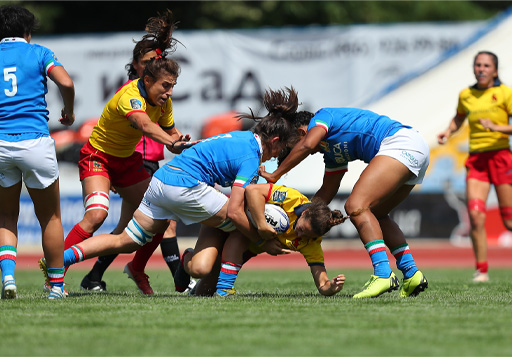5 Sport concussions and the female athlete
Concussion is a brain injury that is caused by a blow to the head, or the head being shaken violently. They are particularly prevalent in contact sports such as rugby, hockey and football but are also present in sports where the head can collide with the ground after a fall, such as horse racing and gymnastics.
Research shows that female athletes are almost twice as likely to experience a sport-related concussion than male athletes (Bretzin et al., 2021), sustain more serious concussions, have worse symptoms, and take longer to recover (McGroarty, Brown and Mulcahy, 2020). While we are starting to understand why this is the case, research is in its early stages and we are only starting to see a fuller picture.
Activity 3 Introduction to concussions in sport
Listen to the audio clip about what causes a concussion, and the short and longer symptoms of concussion. Then answer the following questions:
- What immediate symptoms may you experience from a blow to the head?
- What longer term effects might you feel from a concussion?
Transcript
Discussion
- Concussion injuries are caused by a blow to the head and this blow does not necessarily result in a loss of consciousness. However, it may leave you feeling dazed and confused about where you are and what you are doing. You may also find balancing difficult and be lacking coordination. Because it is the brain tissue that is injured you may not see typical signs of injury, such as bleeding or bruising, but that does not mean that these injuries are potentially very serious.
- Long-term dizziness and headaches are tell-tale signs of a concussion. Fatigue, memory loss and nausea are also common symptoms.
Further information about signs and symptoms of concussion and what to do about them can be found on the NHS website [Tip: hold Ctrl and click a link to open it in a new tab. (Hide tip)] .
For female athletes, concussions can also cause a disruption to the menstrual cycle, including amenorrhea, which is the loss of periods (McGroarty, Brown and Mulcahy, 2020). This is because the menstrual cycle is controlled by the hypothalamus in the brain and its function is disrupted by head injuries. Earlier research by Wunderle et al. (2014) showed that women who experienced concussion during the second half of their menstrual cycle (when progesterone levels are high), suffered worse outcomes than those women experiencing head injury during the first half of their cycle.
These differences are attributed to the disruption to the brain-ovary axis causing progesterone levels to fall rapidly. Research into the menstrual cycle and concussion is still emerging, but tracking when concussions occur in the cycle might be helpful information in the complex evaluation of brain injuries.

